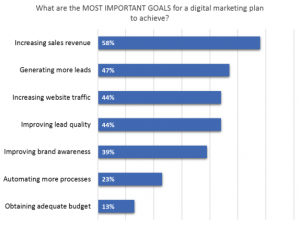Can we blame people for judging companies on their culture?
We all spend such a high proportion of our lives at the office nowadays — it’s unsurprising that we care about our working environment.
Most conversations on culture inevitably end up on perks.
Which companies provide free lunch? Which offer gym memberships? Which give you the best ‘stuff’?
Perks are great, (my table tennis has gone from strength to strength since joining Beamery), but they’re not the best way to attract talent.
Inevitably, they’ll always be a different company that can offer better ‘stuff’ — it’s not worth trying to compete.
The trick is creating an awesome working environment that makes your team excited to come to work day in, day out.
This is what candidates really care about.
Why does it matter?
Salary isn’t the only tool that recruiters and hiring managers can use to encourage top candidates to accept offers.
Company culture is playing an ever increasing role in the decision-making process, particularly with millennials:

Source: https://www.glassdoor.co.uk/employers/popular-topics/hr-stats.htm
If you want to tap into this market, you need to start thinking seriously about culture!
Here are the 4 things you need to consider when carving out your own company culture:
1. Culture starts with hiring
Culture isn’t just for your employees. It starts the moment a candidate first comes across your brand.
Employer branding is the way that you show candidates what’s special about your company culture. It’s your own unique scent.
It’s essential that your hiring process is heavily infused with this scent!
Candidates might browse your site and read your ‘About Us’ page, but the formative impression that they’ll have of your company will be based off their interactions with your recruiting team.
If you’re not careful, you can do some real damage to your employer brand at this stage:

Source: Does Candidate Experience Matter?
The companies that sustain high application numbers tend to be the ones that are the best at transmitting their culture to candidates.
Google is the market leader here. They are fantastic at broadcasting their culture of innovation, and have 3 million applications each year to show for it!
How do you get your company culture across to prospective applicants and give them a great hiring experience? As you can see from the image below it’s definitely worth it
i) Encourage your team to share
Share insights into what it’s really like to work at your company on social media. This could be anything from pictures of team events, to blog posts written by members of your team
ii) Engage potential applicants
Recruiting is a team sport. Encourage your whole company to engage with interested candidates online
iii) Provide an excellent candidate experience
Treat your candidates like customers! Keep them updated at every stage of their application and try and provide as a personalized an experience as possible.

Source: http://www.aspirecambridge.co.uk/blog/2014/11/getting-the-candidate-experience-right/
2. Create a motivational work environment
Is it the responsibility of management to motivate the troops?
High performance is often attributed to leadership. Most companies look for top managers who can squeeze extra effort from their team, and inspire them to new heights.
I’m going to go against the grain here and be a little controversial:
I don’t think we can depend on management for stimulus. Your team has to want to work, motivation is highly personal.
The best way to encourage personal motivation that I’ve come across is working culture. Fostering a supportive environment where employees feel valued and happy can pay huge dividends.
Here are few considerations that should help you build this kind of culture:
i) Being approachable
If an employee has a problem make it easy for them to come and speak to you.
ii) Being flexible
If someone needs to work from home every Wednesday to pick up their children from school, don’t stand in their way. They will be grateful and may work harder as a result.
iii) Being a team
This can be as simple as having lunch together every day. Work on fostering bonds between your employees and you should see an increase in happiness and productivity.
3. You need a unique company mission
People like to work towards something.
I’m sure you’ll agree that it’s always much easier to encourage people to work late when they’re engaged in an interesting project.
In the same way, if your company has a purpose, it’s far easier to keep your employees invested, and potential applicants interested.
Case Study: Salesforce
Salesforce has managed to retain this sense of purpose despite their size.
A great example of this is their 1:1:1 model, since adopted by the likes of Google, Dropbox and GoPro.

Since the company’s conception, founder Marc Benioff has advocated the use to Salesforce people, technology and resources for charitable means. It’s something he refers to as ‘integrated philanthropy’, and it’s built directly into the Salesforce business model.
Everyone at the company knows that they’re not only producing and selling a product that makes it easier for sales teams to manage their workflow and close leads, but that they’re employed by an organisation that genuinely cares about doing good.
This helps Salesforce attract and retain a talented workforce, (now numbering 13,000), and has led to them being named one of Fortune’s ‘Best Companies to Work For’ six years running.
This model isn’t designed for everyone — you need to sit down with your team today and pinpoint exactly what your own company mission is.
It’s the recruiting team’s responsibility to ‘sell’ this purpose to candidates interested in applying — it’s what makes your company unique and should be what gets someone to choose you over a competitor!
4. Communicating culture is essential
Poor communication could be really costing you.

Source: SIS International Research
Ultimately, the company vision has to come from on high.
It’s important that your management team has a clear idea of what he wants your company culture to look like, but it’s even more important that they communicate that idea to the rest of the organisation.
This is the only way a company can unite around a singular purpose — Benioff was instrumental in driving the Salesforce vision forward, your leaders need to do the same for your company.
If communicated effectively, culture should form an important part of everyone’s workday.
Here’s a quick example:
To form a collaborative culture, organisations need to make working together a key part of every employee’s workflow.
There are a few ways to do this:
i) Use collaboration software like Asana or Trello to make sure everyone is on the same page
ii) Hold frequent brainstorming meetings to make sure everyone feels like their ideas are heard
iii) Try an open plan format to your office instead of hiding everyone away in separate offices
Some companies are prepared to take an unconventional approach to achieve an awesome level of collaboration.
Software developer Valve actually gives each employee a desk with wheels and encourages them to ‘roll around the office’ and get involved in projects that they can add value to. This whole process is documented in their employee handbook — well worth a read!
You may want to keep your desks firmly anchored in place, but ensuring effective communication flow from the C-Suite down will make your culture far more likely to stick.
Summary
At the end of the day it all depends on priorities. Creating an awesome company culture does require a certain investment, some companies go as far as appointing a ‘Chief Cultural Officer‘ to manage the process.
Providing your team with a great working environment is the best way I know of to get them to go consistently above and beyond the line of duty — it’s also the one of the best ways to attract top talent.
(84)






